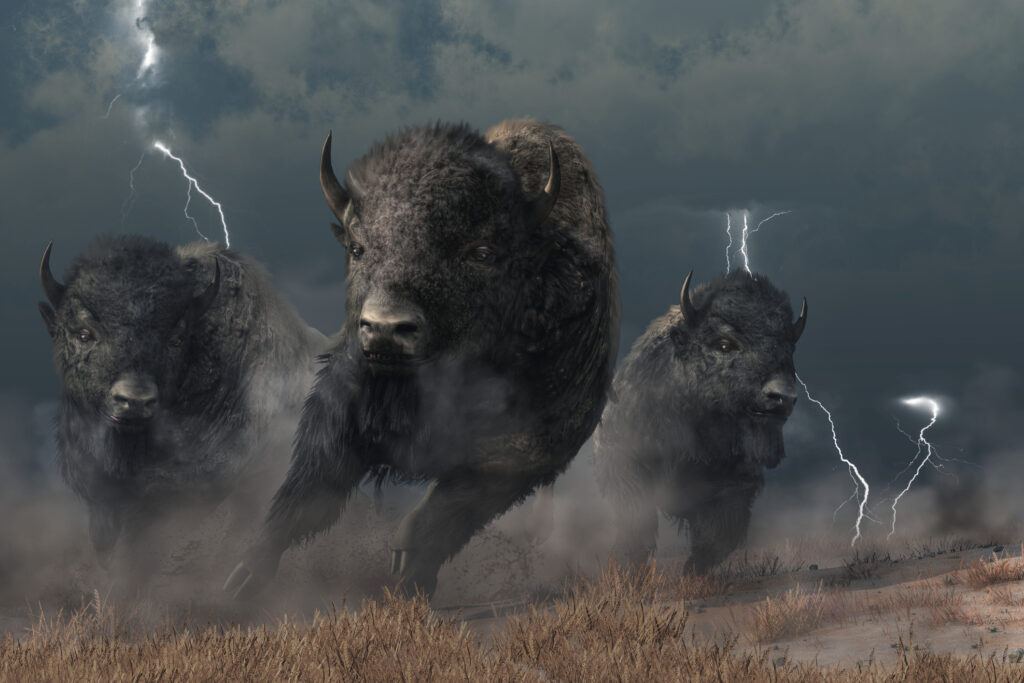I have always been amazed by the way that animals can sense impending storms. As a child, I spent my formative years growing up in rural Alabama. Surrounded by cotton fields and livestock, I got a front row seat to witness the key difference between cows and buffalo.
Other than the pretty obvious physical discrepancies, cows and buffalo are actually very similar in many ways. But there is one distinction that I always noticed in the behavior of the two animals whenever a storm rolled in. Cows, like many animals, will begin to run away from the storm when they sense its approach. In contrast, the buffalo sensing that same storm will turn and run into the storm.
While this difference may seem trivial, each animal is impacted by their choice. As the cows run away and the weather moves with them, they remain in the storm for much longer than their buffalo friends, who run into (and therefore out of) the weather much faster.
I am sure you are wondering what buffalo and cattle have to do with credit unions and community banks navigating the consumer uncertainty created by the failure of 2+ banks over the past 4 days. In an effort to be calculated and informed, the credit union and community banking space can sometimes be slow to act on information.
This cannot be one of those times.
This is not a moment when our industry can afford to stick its head in the sand in the hopes that it will all blow over. It is time for credit unions and community banks to be the buffalo. We are all committed to “serving the underserved” and pouring our time, effort, energy, and resources into serving our communities. The consumer at large needs their local credit unions and community banks to be the voice of calm in this storm.
Our communities need to understand what happened, and what makes us different. Also, what can we learn from this experience, and how will this impact our business moving forward?
Let’s talk about what happened. In my opinion, these failures appear to be a vast mismanagement of diversification, lack of proper risk management and modeling, an economic perfect storm, and a widespread panic in a social-media-based society (insanely powerful and unbelievably fast). There is an endless amount of information and opinions about what went wrong, and I encourage you to take a long look at the situation and develop your own opinion as well.
How are we different? The credit union and commercial bank industry is divinely positioned to calm the fears of the average consumer and serve as a source of education. We must run at the storm! We must teach consumers about the stability of our organizations, the methodology used to determine risk appetite, and the stop gaps in place to measure risk.
What lessons can we learn? For me, the lessons learned fall into three primary takeaways:
- Nothing has taken the place of deep trust (nor will it). Last week’s run and resulting collapse stemmed from a lack of trust in the financial stability that spread through social media like wildfire.
- Diversification is key. While specializing in serving a certain consumer need still has value, diversification of risk is essential in maintaining balance and weathering the storm.
- Deep education is needed to explain and rebuild faith in our financial system and individual financial institutions.
If I had to predict what the fallout from this collapse may be, I would imagine that we may see some guidance from NCUA that speaks to even further consumer transparency (possibly touching on the currently confidential CAMEL rating system).
While nothing is certain, one thing has remained the same for well over 100 years: Community banks and credit unions have been placing the needs of their members, customers, and communities above their own, and this current moment will be no exception.
Be the Buffalo.
Laurie’s opinions, expertise, and passion are her own. Connect with Laurie on LinkedIn.







